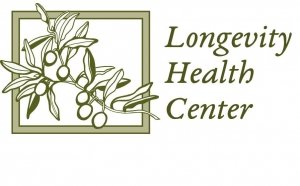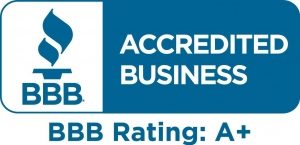By Dr. Alice Honican, Licensed Acupuncturist and Bioenergetic Practitioner
There’s no question that our nation is in the midst of a mental health crisis, and emotional imbalance is on the rise. Here in the U.S., we place a great deal of value on success, and with that comes the pressure to stay busy, perform, and keep up with the Joneses.
The recent pandemic and all the fear and uncertainty that came along with it only added to our stress and emotional struggle. According to a survey conducted by the National Center for Health Statistics, 40% of Americans reported symptoms of anxiety and depression in 2020, compared to just 11% in 2019.
Fortunately, there are so many holistic steps we can take to balance the many emotions that come along with being human. Here at Longevity Health Center, we offer several detoxifying and supporting therapies to help our patients feel whole and vibrant in mind, body, and spirit. We have found time and again that addressing the emotional state of the patient is an essential component of their healing strategy and of the patient’s general well-being. In many cases, emotional symptoms left unchecked often manifest into physical symptoms.
Our Nutrition Shop is also stocked with natural supplements like fish oil, minerals, neurotransmitters, and homeopathic medicines to support mental and emotional well-being. One of our favorite natural alternatives for balancing emotions are Bach Flower remedies. These medicines are derived from flowers and plants to help us rediscover our inner sense of peace and restore emotional well-being in our everyday lives.
Contact Our Nutrition Shop
The following is a comprehensive list of the 38 Bach Flower Remedies and their specific uses for emotional balance and well-being:
Agrimony: For those not wishing to burden others with their troubles and who cover up their suffering behind a cheerful facade. They are distressed by argument or quarrel and may seek escape from pain and worry through the use of alcohol or drugs.
Aspen: For those who experience vague fears and anxieties of unknown origin. They’re often apprehensive and full of foreboding.
Beech: For those who, while desiring perfection, easily find fault with people and things. Critical and at times intolerant, they may overreact to small annoyances or idiosyncrasies of others.
Centaury: For those who are over-anxious to please, often weak willed, and easily exploited or dominated by others.
Cerato: For those who lack confidence in their own judgment and decisions. They constantly seek the advice of others and may often be misguided.
Cherry Plum: For fear of losing mental and physical control, of doing something desperate. May have impulses to do things thought or known to be wrong.
Chestnut Bud: For those who fail to learn from experience, repeating the same patterns of mistakes again and again.
Chicory: For those who are overfull of care for others and need to direct and control those close to them. They are generally possessive, always finding something to correct or put right.
Clematis: For those who tend to live in the future, lack concentration, are daydreamers, drowsy or spacey, and have a half-hearted interest in their present circumstances.
Crab Apple: For those who may feel something is not quite clean about themselves or have a fear of being contaminated. For feelings of shame or poor self-image. For example, thinking oneself is not attractive for one reason or another. When necessary, may be taken to assist in detoxification, as during cold or while fasting.
Elm: For those who at times may experience momentary feelings of inadequacy, being overwhelmed by their responsibilities.
Gentian: For those who become easily discouraged by small delays or hinderances. This may cause self-doubt.
Gorse: For feelings of hopelessness and futility even when there is hope of relief.
Heather: For those who seek the companionship of anyone who will listen to their troubles. They are generally not good listeners and have difficulty being alone for any length of time.
Holly: To be used when troubled by negative feelings such as envy, jealousy, hate, suspicion, revenge. Vexations of the heart, states indicating a need for more love.
Honeysuckle: For those dwelling in the past, nostalgia, homesickness, always talking about the good old days, when things were better.
Hornbeam: For the Monday morning feeling of not being able to face the day. For those feeling that some part of the body or mind needs strengthening. Constant fatigue and tiredness.
Impatiens: For those quick in thought and action, who require all things to be done without delay. They are impatient with people who are slow and often prefer to work alone.
Larch: For those who suffer from despondency and despair, also treats low self-esteem and lack of energy.
Mimulus: For fear of known things, such as heights, water, the dark, other people, or being alone, etc. often shy and timid.
Mustard: For deep gloom that comes on for apparently no known reason, sudden melancholia, or heavy sadness. Will lift just as suddenly.
Oak: For those who struggle on despite despondency from hardships, even when ill and overworked, they never give up.
Olive: Treats states of exhaustion in mind/emotions, body and spirit. Weariness and exhaustion may permeate all physical structures and call for rest and recuperation.
Pine: For those who feel they should do or should have done better, who are self-reproachful or blame themselves for the mistakes of others. Hardworking people who suffer much from faults they attach to themselves. They are never satisfied with their success.
Red Chestnut: For those who find it difficult not to be overly concerned or anxious for others, always fearing something wrong may happen to those they care for.
Rock Rose: This remedy treats symptoms that relate to fear and panic. For a chronically weakened nervous system, acute anxiety, as well as internal and external trembling.
Rock Water: For those who are very strict with themselves in their daily living. They are hard masters to themselves, struggling toward some ideal or to set an example for others. This would include strict, often rigid adherence to a living style or to a religious, personal or social discipline.
Scleranthus: For those unable to decide between two things, the first one seems right then the other. Often presenting extreme variations in energy or mood swings.
Star of Bethlehem: For grief, trauma, loss. For the mental and emotional effect during and after trauma.
Sweet Chestnut: For those who feel they have reached the limits of their endurance. For those moments of deep despair when the anguish seems to be unbearable.
Vervain: For those who have strong opinions and who usually need to have the last word, never able to keep their mouths shut, always teaching or philosophizing, they are easily incensed by injustice. When taken to extremes, they can be argumentative, wanting to enthuse others with their ideas, and in their excessive eagerness use too much pressure.
Vine: For those who are strong-willed leaders. They are unquestionably in charge, deliberately using pressure to achieve his own goals.
Walnut: Assists in stabilizing emotional upsets during transitional periods, such as puberty, adolescence, and menopause. Also helps one to break past links and emotionally adjust to new beginnings, such as moving, changing, or taking a new job, beginning, or ending a relationship.
Water Violet: For those who are gentle, independent, aloof, and self-reliant, who do not interfere in the affairs of others, and when ill or in trouble prefer to bear their difficulties alone.
White Chestnut: For constant and persistent unwanted thoughts, such as mental arguments, worries or repetitive thoughts that prevent peace-of-mind, and disrupt concentration.
Wild Oat: For the dissatisfaction with not having succeeded in one’s career or life goal. When there is unfulfilled ambition, career uncertainty or boredom with one’s present position.
Wild Rose: For those who for no apparent reason have resigned themselves to their circumstances. Having become indifferent, little effort is made to improve things or find joy.
Willow: For those who have suffered some circumstance or misfortune, that they feel was unfair or unjust. As a result, they become resentful and bitter toward life or toward those who they feel were at fault.
Rescue Calm: a homeopathic combination formula containing five flower essences traditionally used for emergency situations and everyday stress. For recent symptoms such as fear, extreme agitation, shock, anxiety, grief, hopelessness, and denial.
Fields of Flowers: A unique combination of the 38 traditional flower essences with each one long associated with a key element of emotional concern. For symptoms such as fear, despair, anxiety, depression, compulsiveness, worry, despondency, intolerance, withdrawal, irritability, aggressiveness, impatience, obsessiveness, and apathy.
At your next Longevity office visit, ask your practitioner to help you determine the best Bach Flower remedy to support you and the specific emotional load you are carrying. Or, if one of these remedy descriptions particularly resonates with you and what you’re going through during this season, you can stop by our Nutrition Shop and we will make a special Bach Flower remedy or combo just for you!
Contact Our Nutrition Shop

